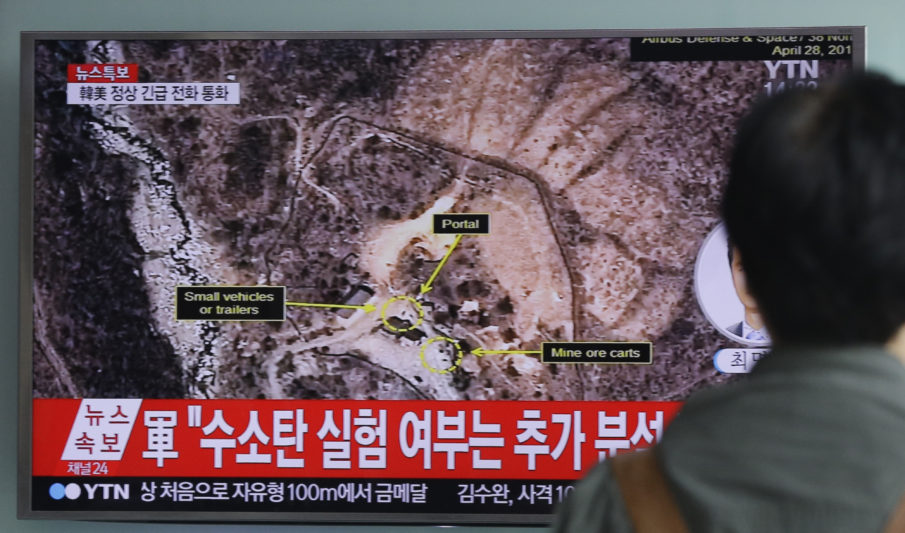Japanese media has released details into an apparent tunnel collapse in North Korea’s nuclear test site that is believed to have killed as many as 200 people.
In a report made on Tuesday, Japanese TV Asahi claimed that some 100 people were trapped or killed in an initial collapse that occurred days after North Korea’s sixth nuclear test in September. The test was believed to have been North Korea’s first successful detonation of a two-stage thermonuclear device, commonly referred to as a hydrogen bomb, and was significantly more powerful than previous tests conducted by Kim’s regime.
More than 100 more people were sent in to conduct rescue and recovery operations within the tunnel when a second collapse enveloped the rescue effort, bringing the reported death toll up to as many as 200 people.
Rumors have swirled about the stability of North Korea’s Punggye-ri nuclear test site in recent weeks, as a series of tremors and landslides that registered on seismographs outside the reclusive state following the September 3rd detonation led some Chinese scientists to speculate that the mountain range over the underground facility was suffering from “tired mountain syndrome.”
What we are seeing from North Korea looks like some kind of stress in the ground,” said Paul G. Richards, a seismologist at Columbia University’s Lamont-Doherty Earth Observatory. “In that part of the world, there were stresses in the ground, but the explosions have shaken them up.”
Satellite imagery during September’s nuclear test showed a massive 85-acre stretch of the peak of Mount Mantap visibly subside during the explosion, indicating not only that the latest test was of a more powerful weapon than seen before within Kim’s arsenal, but also that the mountain has sustained serious structural weakening. Concerns have also been levied about the possible release of nuclear materials or radiation if the mountain were to collapse.
The test detonation itself registered as a whopping 6.3 magnitude earthquake at the time, with a 4.1 magnitude quake following on its heels only eight or so minutes after the blast, and a series of smaller quakes ranging from 2-3 in magnitude in the days that followed. It is believed that the tunnel collapses occurred during these subsequent quakes.
“Based on the severity of the initial blast, the post-test tremors, and the extent of observable surface disturbances, we have to assume that there must have been substantial damage to the existing tunnel network under Mount Mantap,” North Korea analysis site, 38 North reported earlier this month, seemingly offering some confirmation for the Japanese claims.
Although there is evidence to support the claims made by Japanese media, confirmation will likely not be forthcoming from Kim Jong un’s North Korean regime. The nation has a long-standing reputation of exaggerated claims of prominence and refusing to acknowledge military or diplomatic failures. It seems likely that even if 200 North Korea citizens were lost in the tunnels of Kim’s nuclear facility, the national government will never acknowledge the tragedy.
American Secretary of Defense James Mattis visited the DMZ dividing North and South Korea last week, ahead of an expected visit in Seoul by President Donald Trump slated for next week.
Already have an account? Sign In
Two ways to continue to read this article.
Subscribe
$1.99
every 4 weeks
- Unlimited access to all articles
- Support independent journalism
- Ad-free reading experience
Subscribe Now
Recurring Monthly. Cancel Anytime.
Image courtesy of the Associated Press











COMMENTS
You must become a subscriber or login to view or post comments on this article.